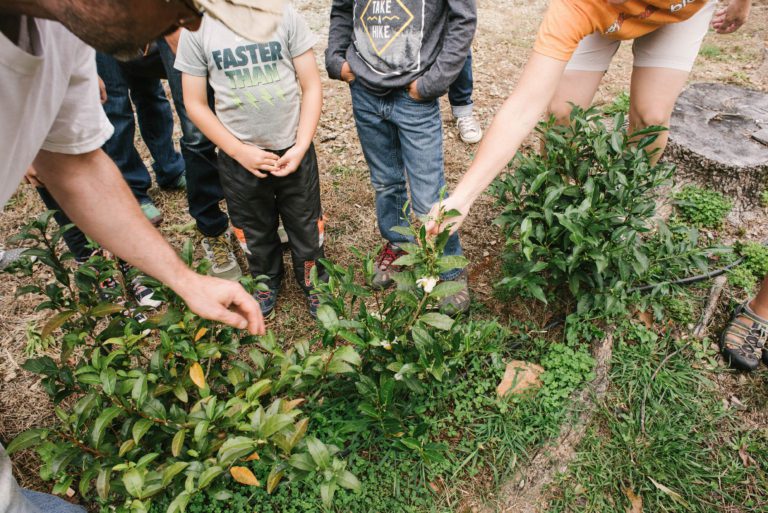There’s a hot drink for these autumn mornings or breezy fall afternoons and its name is not coffee.
Her name is Tea and she’s just as beautiful and varied and charming as her friend coffee.
It’s a short dreamy drive from the heart of Travelers Rest to what is becoming a mecca for tea lovers and tea connoisseurs, for tea enthusiasts and tea wanna be fans.
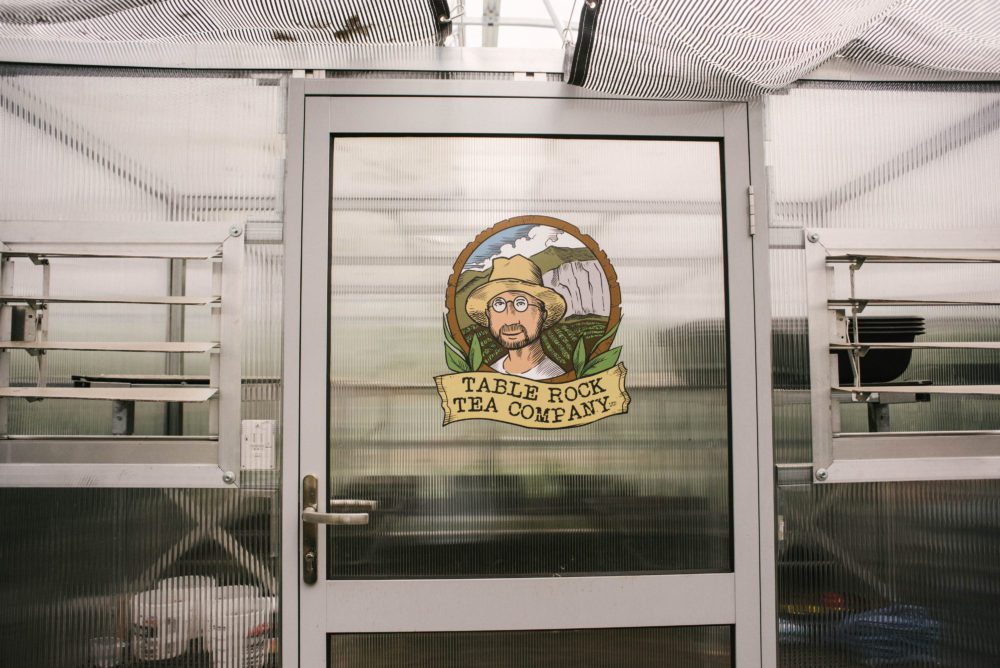
Table Rock Tea Company is growing and cultivating artisan tea right in the shadow of the gorgeous iconic Table Rock. And the couple behind the delicious tea are as unique and interesting as the process itself.
Steve and Jennifer Lorch are the founders of Table Rock Tea Company.
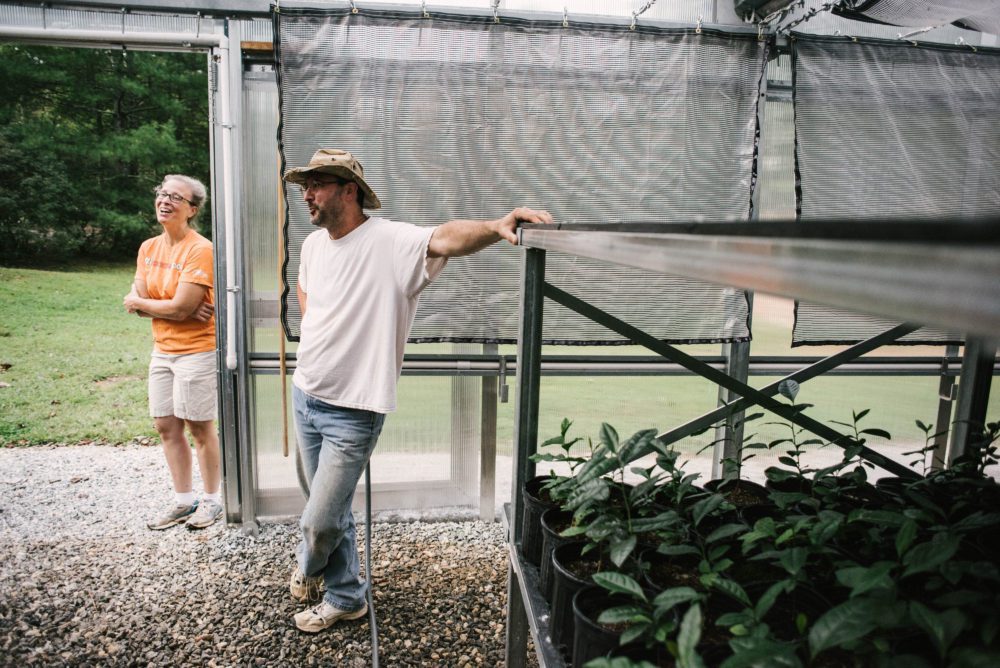
Our family gathered with some friends recently and toured the tea farm with the Lorchs and gained more than just an education about growing tea. At first our gang was distracted by all the fun things at the farm that had nothing to do with tea – lizards and rocks and insects and the dog who lives at the same address.
With a stop at the first tea plant we came across we learned something big right away. “Anyone know what sort of tea grows from this bush?” Jennifer asked, an educator’s ease in her voice. The kids tossed out some answers.
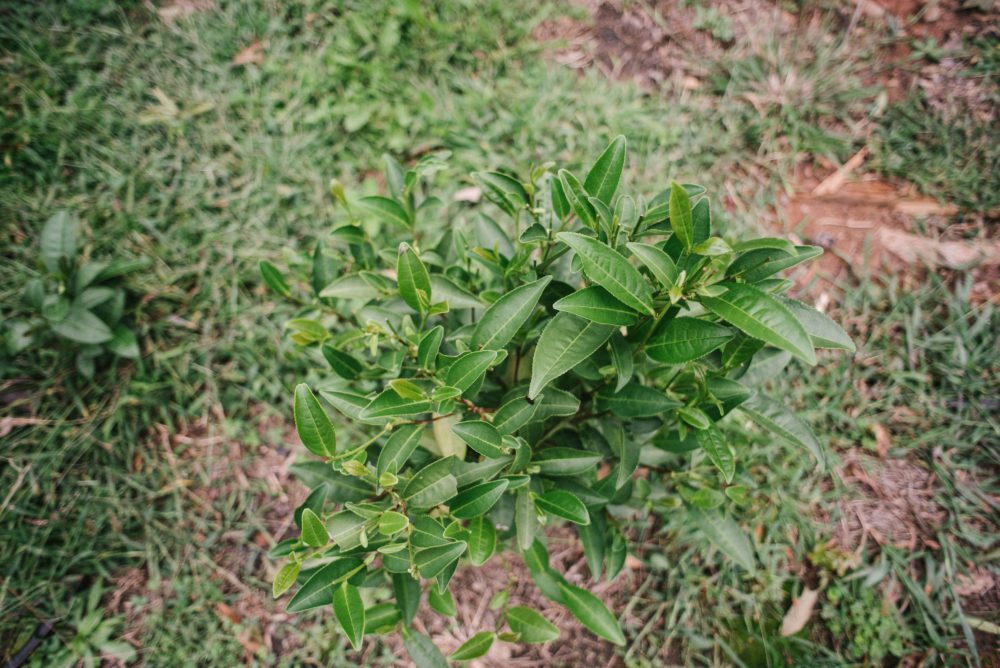
Green tea?
Yes.
Black tea?
Yes.
Oolong tea?
Yes.
Orange tea?
Yes.
“All of those teas come from the same plant – it just depends what you pick, when you pick it and how you process it – but it’s all the same plant,” Steve shares with our eager learners.

The Lorch family started planting tea plants in Mauldin in a subdivision but they’ve come an incredibly long way since those days.
Steve instructs the kids on the plucking procedure and the various names people give teas along the way. “Two leaves and a bud is the standard pluck,” he explains. However, there are a myriad of variations on this. The plant itself is evergreen and could grow thirty feet tall if left to itself.
“Because we pluck the two leaves and a bud, it stays shorter,” Jennifer shares.
Tea plants actually make a great landscaping choice – and serve many purposes. At the farm, the tea plants are in rows planted along the contours of the land, land that was once upon a time used for growing cotton.
The original seeds for their tea plants came from India but they are almost at the point of creating and cultivating all of their own seeds.

Last year they began the Table Rock Tea Consortium and they are a licensed nursery so if you want to purchase tea plants for your own yard, they’re available here. “Homeowners who want to landscape with something useful often think of this. A tea plant will produce a quarter pound of finished product per year,” Steve says. “The really neat part is, if you plant more than you would need for your own personal tea consumption, which is likely if you plant the tea plants for landscaping, then we will actually buy the tea back from you.” Steve explains that when the plants reach maturity – in four to five years – you’d actually be making money from your landscaping. (Something we all know is kind of rare. A yard that gives you money, instead of taking money.)
Steve and Jennifer offer training when you purchase their plants if you decide to sell back to them. “Our goal, in the next thirty years, is to make the upstate known as tea country,” Steve says.
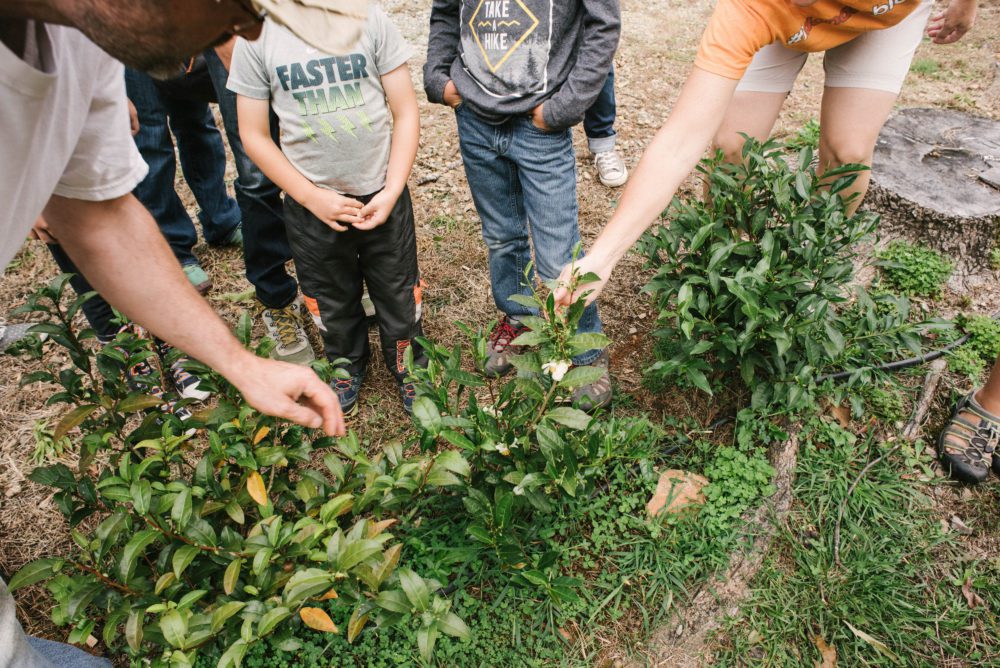
We laughed about the size of the goal, but the confidence the couple exudes is not a joke at all. They’ve got the ability and the dream, the determination and the means to make it happen. The consortium is the method they’re hoping to use. “People are producing lots of tea within an hour’s radius of this facility,” Steve says.
The tea plants carry a sweet and light smell with a simple and lovely flower that blossoms in the fall. They’re as pretty as they are practical.
Tours happen routinely at Table Rock – you can schedule one, although people definitely do show up at the farm regularly. In fact, you can camp at Table Rock Tea Company in a sweet little spot that has a lovely view of Table Rock. They are associated with Hipcamp – a program that’s a lot like AirBnB, but for camping.
The farm sits on 17 acres and currently there are about 3,000 tea plants on the property. It’s a long process from start to success and Steve and Jennifer are about four years into the journey.

Previously, the couple ran a ministry called Hydromissions International, an organization bringing water to communities across the globe. They ran that for about ten years before handing it off to other people. One of their trips took them to Kenya, a country that exports about twenty percent of the world’s tea. “We didn’t know that, in fact – we didn’t even drink tea until we were in Kenya doing a water project there,” Steve says, as we follow him to the greenhouse on the property, passing a few apple trees along the way. He shares the story of how he and Jennifer fell in love with tea. “We drank it fresh from the field,” he says. After they came home, they bought a tea plant online. (In fact, it was the same plant we had passed earlier in our day, one that looked rather smushed actually. Because a bear had decided to take a little rest on top of it.) The tea plant inspired them to decide that they only wanted to plant items that were purposeful and not only ornamental. This led them to think about plants that grew well ornamentally but also produced something – tea. As they added up the plants required for their particular project and the numbers grew, they decided, hey – maybe we should just start a tea company.
“It just sort of happened,” Steve laughed.
Jennifer chimed in, “When we toured the plantations and facilities in Kenya – we had a cup of tea that was ninety minutes old, from cup to plant.” That cup helped to change their lives.
At this point, we’re all standing in their greenhouse. The greenhouse they built with the money they earned from selling their home in Mauldin.
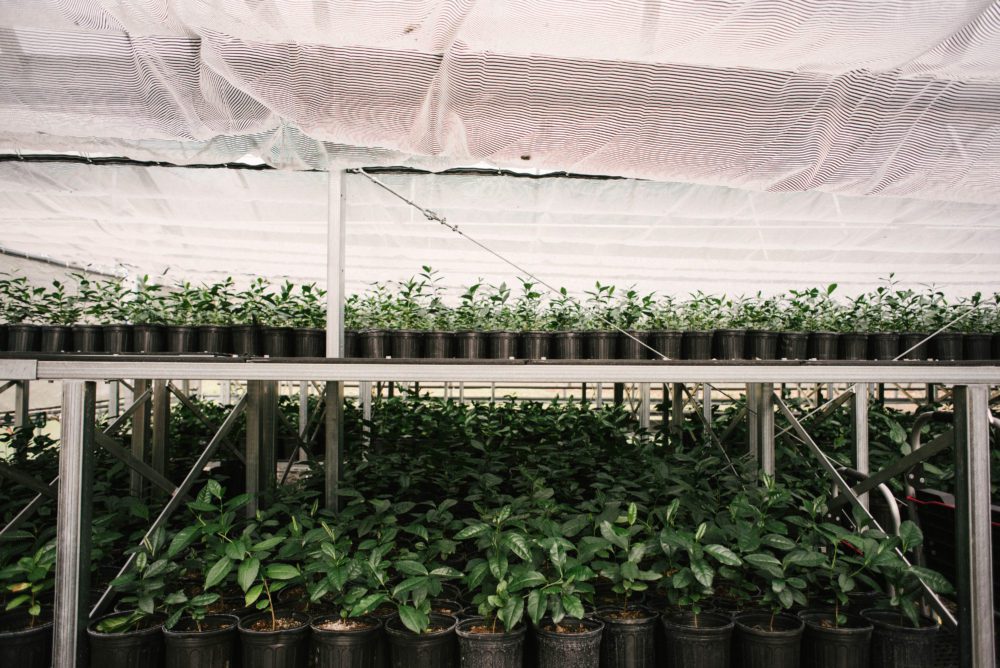
Tea plants are susceptible to sunburn when they’re very young, Steve explained, which is why a greenhouse can be helpful in the process. The plants in the greenhouse have all been grown from seed, which is why they need more protection. The kids all passed around the marble like seeds of the tea plants, thousands of which are planted at a time. The planting begins in November in the greenhouse. They’ll lie basically dormant until spring and Steve says the germination process is almost at a one hundred percent success rate. The odds are apparently ever in their favor. The seeds look dead, but are filled with the potential of the tea plant, all in a tiny hopeful seed.
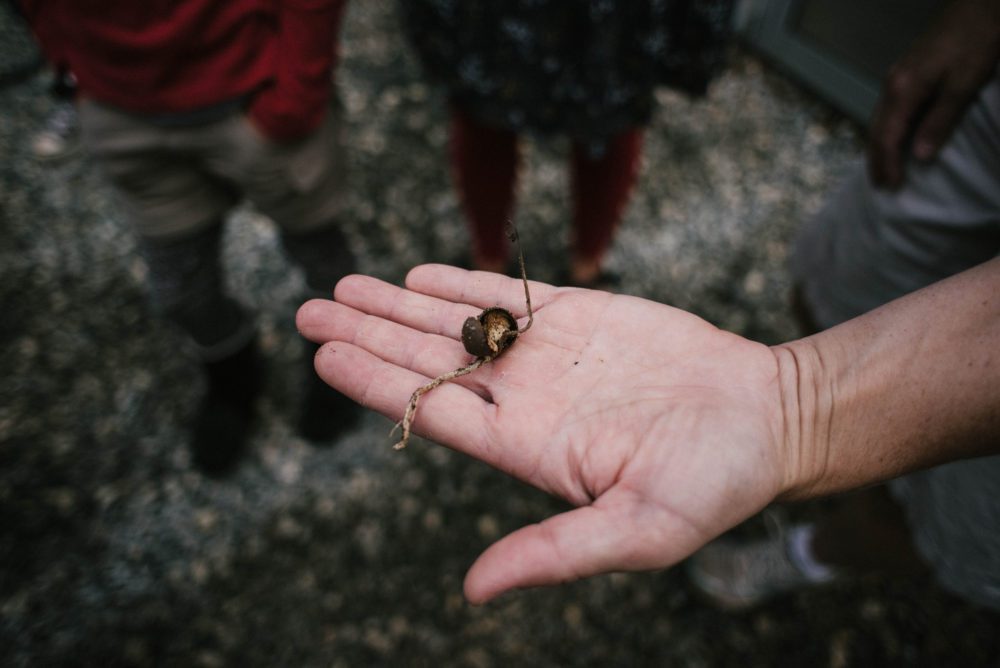
Steve and Jennifer rely on volunteers for a lot of work around the farm and are always open to helpers who want to tag along and help plant tea bushes and do farm labor. (If you want to volunteer – get in touch. You won’t regret it.)
Self-educated, Steve is not kidding when he says he wrote the book about growing tea. No. Actually he really DID write the book. (You can buy it on Amazon.) And he and Jennifer often travel around the country sharing their knowledge and educating others.
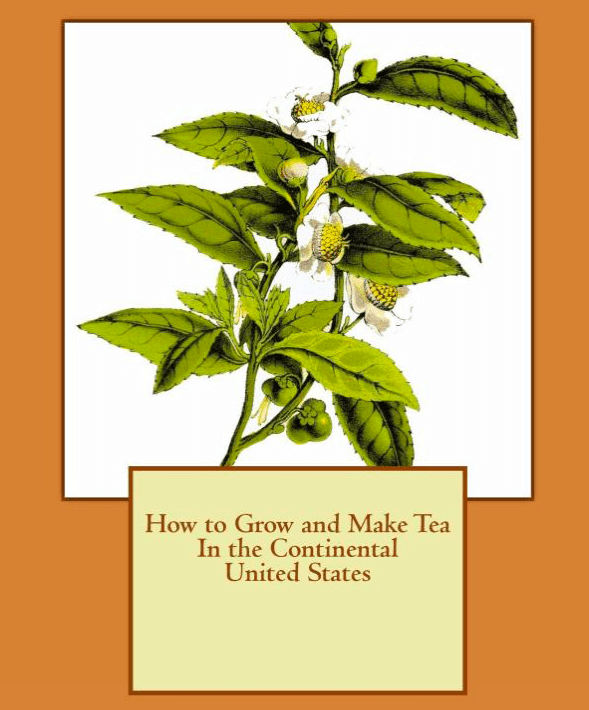
There aren’t many other growers in the United States who are growing tea – and they’re the only people raising mountain gown, shade grown tea. And that matters in the tea world – because how it’s grown changes its flavor. “Tea is like wine, it derives its flavor in how it’s grown and where it’s grown,” Steve shares. The climate here in South Carolina makes Table Rock’s tea caffeine content higher than other locations.
The leaves are picked beginning in May and then throughout the year until September. It’s called a flush – and you pick the tea as it “flushes”. We trekked around the property, took in the gorgeous view of the rock itself, toured the greenhouse and the tea plants and the campground area. Steve and Jennifer live in a beautiful and creative home on the property and the tea process happens all exclusively right on the property – some of it in the area below their own home. In fact, that’s where the processing plant is. It’s tidy and streamlined – and it smells delicious.

Eventually, as the farm grows, the tea plants will be all over the entire property and you’ll be able to see the lines of tea plants from Highway 11. Another long term plan is to include a cafe and bakery and shop on property too. This will be a great bonus to campers and travelers along the Highway 11 route. Steve and Jennifer are long term visionaries, hopeful that the farm will go on and grow long and far beyond their own lives.
As we wrapped up our tour, we entered the micro factory, as the couple calls it, and we all sniffed deeply at the intense and pleasant aroma. We watched the process and saw leaves that were plucked that morning and were currently in the withering process. The leaves become soft and they’ll be ready for the next stage – which is when you decide which tea you want to make. It’s the oxidation that changes what type of tea is made. Heat stops oxidation and if you bake the tea immediately, it’ll become green tea. You can instead choose to beat up the leaves a bit and move on to black tea or oolong tea. (Oolong tea is bruised, but not beat up. Black tea will be put in a grinder. Currently, the pair is using a former meat grinder for their black tea blend.)
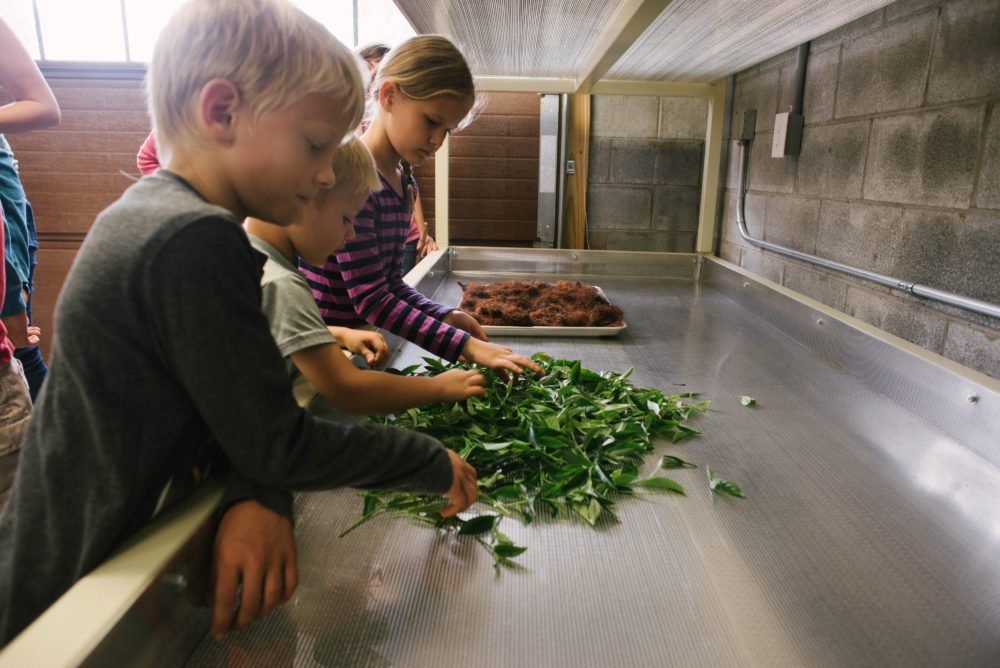
Steve was kind enough to run the systems through for us and the kids were duly impressed (and so were the grown ups) with the entire fascinating process. The process takes a few more steps – a drying oven (actually a former oven at Subway) and a few other steps in the process before you can steep the tea in your own mug. (Preferably a pottery mug you buy at the Farmer’s Market. Naturally.)
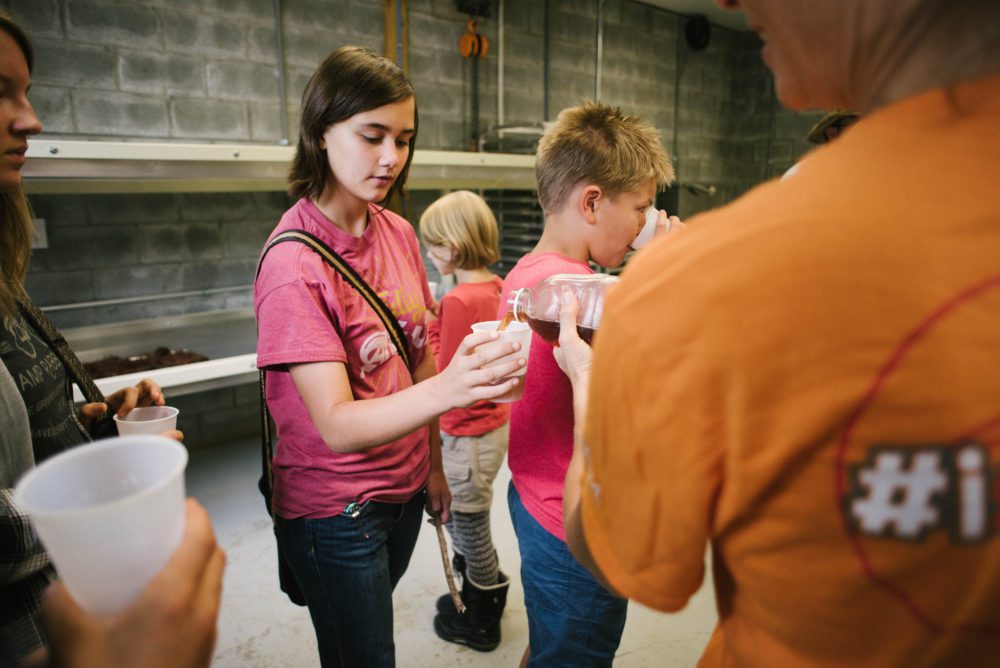
After our tour is complete and our tea education has just begun, we take a peek at the tea mobile – maybe you’ve seen Steve and Jennifer serving tea from the tea mobile at a market or festival. You can’t miss their logo, Steve says it’s his stunt double but we know better. They have some cute bandanas featuring their logo – and if you follow along on their feed on Instagram, you can see all the neat places the bandanas travel. (We’ve already taken ours hiking all over the place.)
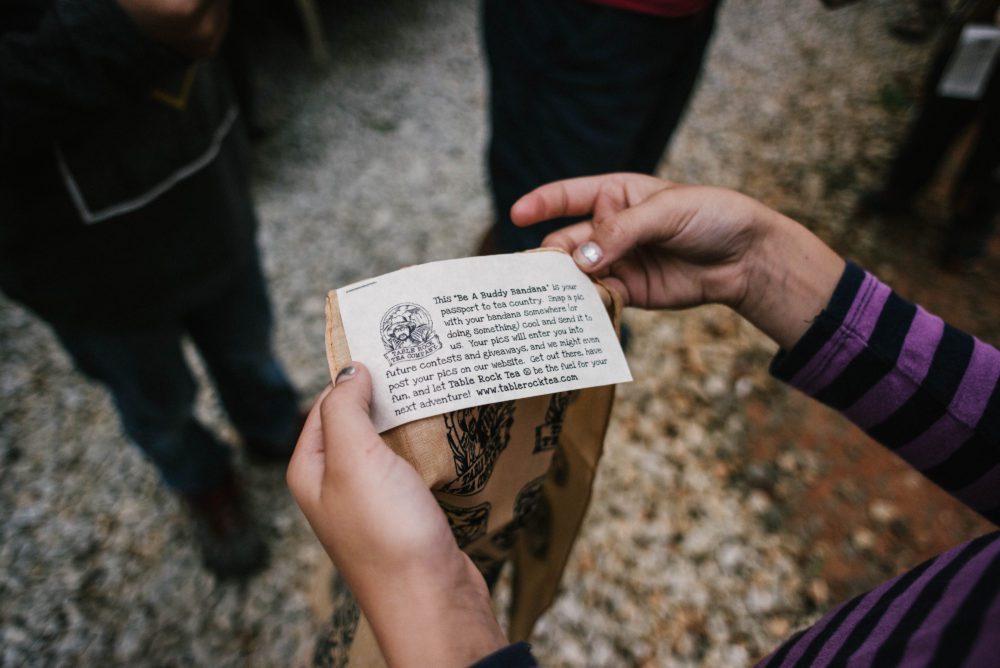
When you purchase tea from Table Rock Tea Company, you’re also helping an organization called OpportuniTea. This is a group designed to help create micro businesses forming in places all across the country who are beginning their own small tea farms globally. It’s just another aspect of the Lorch’s big ideas germinating from small packages – like the tea seed.
You can buy their tea online or at the tea mobile at events. The packaging is just as fun as the people plucking the two leaves and a bud – especially the wooden crate that some of the tea comes packaged inside.
Of course we toasted our new love of tea with … tea.
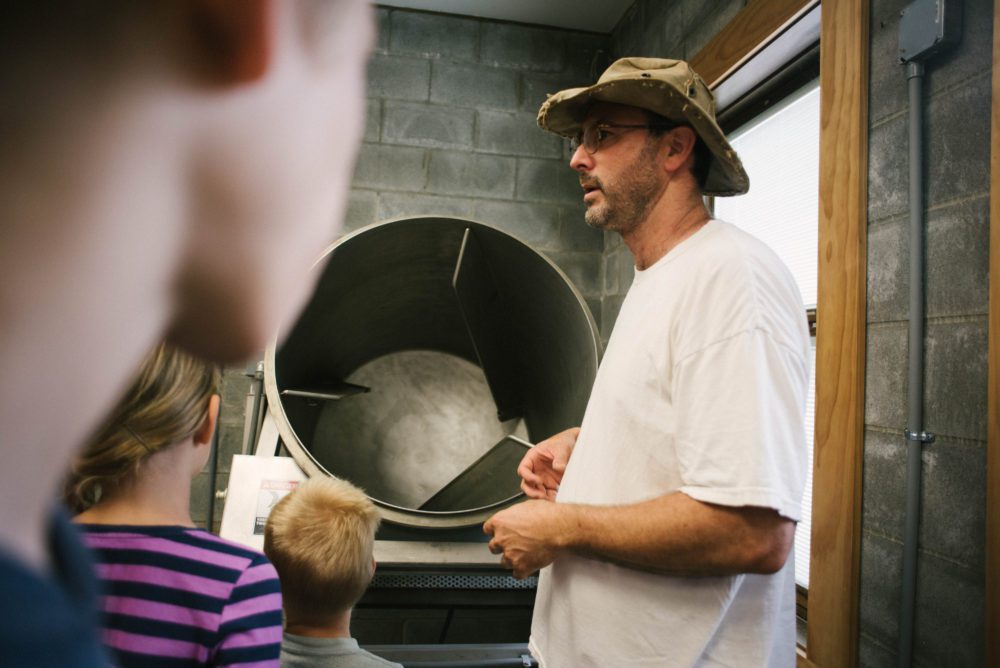
_______________
All photos taken by Jane Howard Photography

